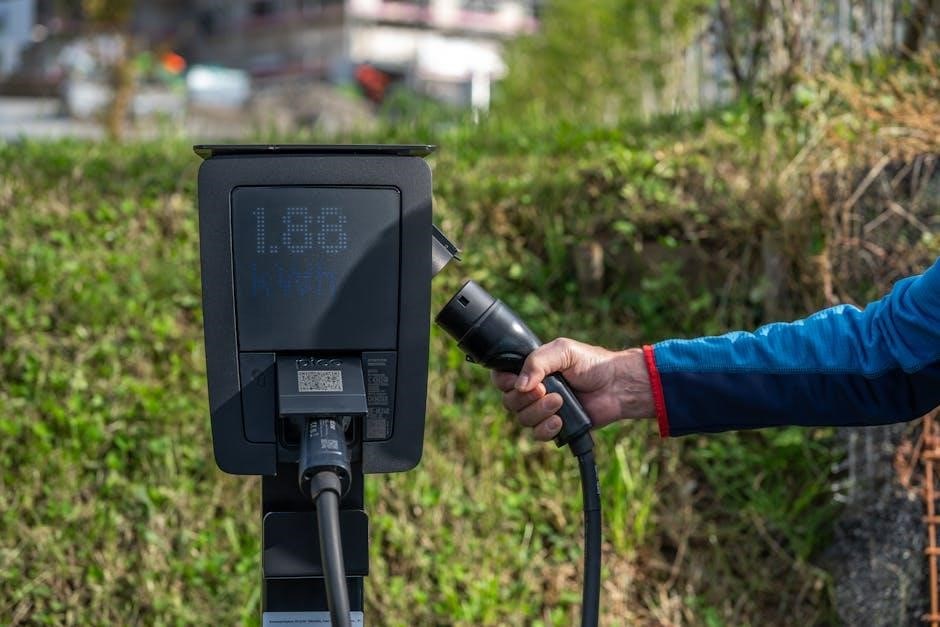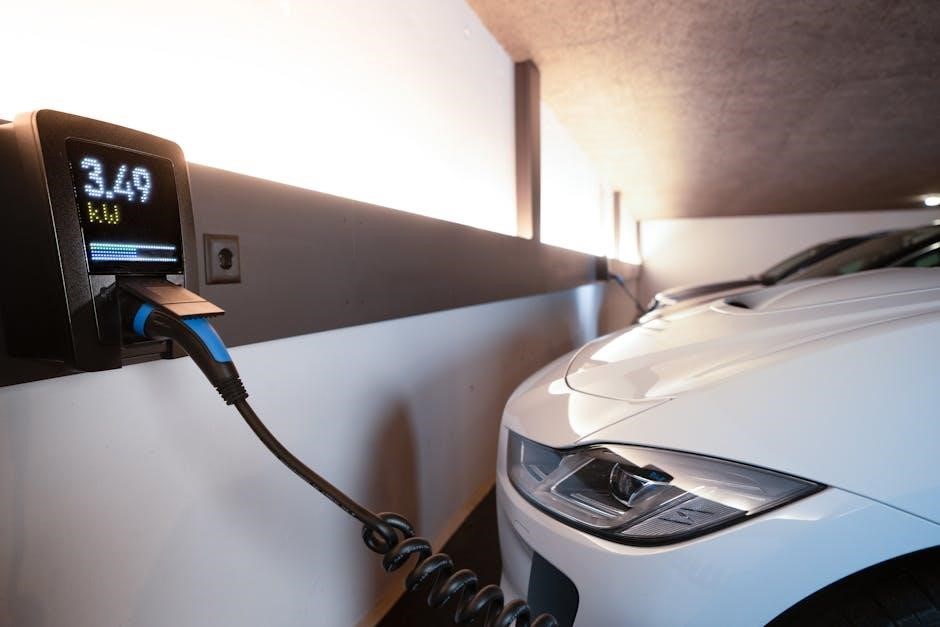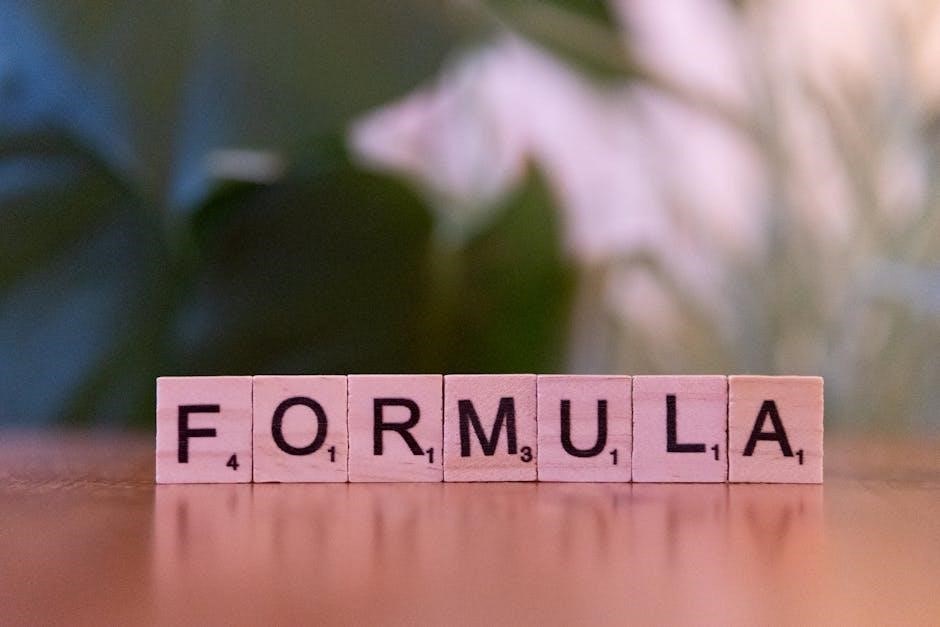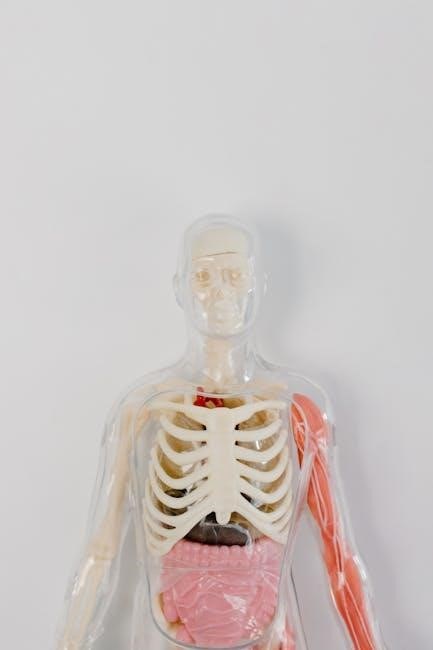Article Plan: Select Battery Instructions (as of 11/22/2025 02:13:57)
Navigating battery selection requires understanding capacity, voltage, chemistry, size, and intended application; lithium-ion excels in high-drain devices, while alkaline suits low-drain needs․
Choosing the correct battery ensures optimal device performance and longevity; consider factors like electrical size, availability, and maintenance, alongside primary versus secondary battery types for best results․
Why Choosing the Right Battery Matters
Selecting the appropriate battery is paramount for device functionality, safety, and lifespan․ An incorrect choice can lead to reduced performance, shortened operational time, or even damage to the device itself․ Understanding the specific power requirements of your application – whether it’s a high-drain smartphone or a low-power remote control – is crucial․
Furthermore, battery chemistry significantly impacts performance characteristics like energy density, discharge rate, and cycle life․ Utilizing a battery not suited for the application can result in frequent replacements, increased costs, and potential safety hazards․ Proper battery selection also contributes to environmental responsibility through optimized energy usage and reduced waste․ Expert guidance, like that from Battery Junction, emphasizes informed decisions for optimal results․

Understanding Basic Battery Terminology
Familiarizing yourself with core battery terms is essential for informed selection․ Voltage, measured in volts (V), represents the electrical potential difference, dictating compatibility with devices․ Capacity, expressed in milliampere-hours (mAh) or ampere-hours (Ah), indicates the amount of electrical charge a battery can store, influencing runtime․
Battery chemistry defines the materials used in the battery, impacting performance and characteristics․ Understanding terms like ‘primary’ (non-rechargeable) versus ‘secondary’ (rechargeable) is also vital․ Cycle life refers to the number of charge/discharge cycles a rechargeable battery can endure before significant degradation․ Finally, ‘electrical size’ and ‘discharge rate’ are key parameters for matching batteries to specific applications, ensuring optimal performance and longevity․

Key Factors in Battery Selection
Prioritize voltage needs, capacity (mAh/Ah), and battery chemistry; consider physical size, application demands, and maintenance requirements for optimal device performance․
Voltage Requirements
Understanding voltage is paramount in battery selection․ Devices are designed to operate within a specific voltage range, and using a battery with an incorrect voltage can lead to malfunction or damage․ Matching the battery voltage to the device’s requirement ensures optimal performance and prevents potential issues․
For instance, a 12-volt device necessitates a 12-volt battery․ Attempting to power it with a lower voltage will result in insufficient power, while a higher voltage risks component failure․ Always verify the device’s voltage specification before selecting a battery․
Furthermore, consider series and parallel configurations․ Connecting batteries in series increases voltage, while connecting them in parallel increases capacity․ Accurate voltage matching is crucial for safe and efficient operation, safeguarding both the device and the user․
Capacity (mAh/Ah) Explained
Battery capacity, measured in milliampere-hours (mAh) or ampere-hours (Ah), dictates how long a battery can power a device․ It represents the amount of electric charge a battery can deliver․ A higher mAh/Ah rating signifies a longer runtime before requiring a recharge․
Essentially, capacity determines how “long-lasting” a battery is․ Devices with high energy demands, like smartphones and laptops, benefit from batteries with larger capacities․ Conversely, low-drain devices, such as remote controls, can function adequately with lower capacity batteries․
Understanding the device’s power consumption is key․ Calculate the expected runtime by dividing the battery capacity by the device’s current draw․ Choosing the right capacity balances runtime needs with considerations of battery size and weight․
Battery Chemistry Types

Selecting the appropriate battery chemistry is crucial for optimal performance and safety․ Different chemistries offer varying characteristics regarding energy density, lifespan, discharge rate, and cost․ The Li-ion family, encompassing LCO, NMC, LFP, NCA, LTO, and LMO, dominates portable electronics due to its high energy density․

However, other chemistries like alkaline and lead-acid remain relevant for specific applications․ Alkaline batteries are cost-effective for low-drain devices, while lead-acid batteries provide reliable power for automotive and backup systems․
Engineers designing industrial systems must carefully evaluate these trade-offs․ Understanding the nuances of each chemistry ensures the chosen battery meets the application’s unique demands, balancing performance, safety, and economic considerations․

Common Battery Chemistries
Exploring prevalent options like alkaline, and the diverse lithium-ion family (LCO, NMC, LFP, NCA, LTO, LMO), alongside lead-acid, is essential for informed selection․
Alkaline Batteries: Uses and Limitations
Alkaline batteries are a ubiquitous power source, commonly found in everyday devices like remote controls, toys, and flashlights due to their affordability and readily available nature․ They offer a relatively stable voltage output and a long shelf life, making them convenient for intermittent use․ However, alkaline batteries are primary batteries – meaning they are non-rechargeable – and therefore contribute to landfill waste․
Their energy density is lower compared to lithium-ion chemistries, resulting in shorter runtimes for high-drain devices․ Performance significantly degrades in extreme temperatures, both hot and cold․ Furthermore, alkaline batteries can leak corrosive chemicals if left in devices for extended periods, potentially damaging the equipment․ While suitable for low-drain applications, their limitations necessitate considering alternative options for power-hungry gadgets or situations demanding longevity and environmental responsibility․
Lithium-Ion Batteries: A Deep Dive
Lithium-ion (Li-ion) batteries have revolutionized portable power, dominating applications from smartphones and laptops to electric vehicles․ Their high energy density, low self-discharge rate, and lack of memory effect make them superior to older technologies․ However, “lithium-ion” isn’t a single chemistry; it encompasses several variations, each with unique characteristics․ Understanding these nuances is crucial for optimal battery selection․
Li-ion batteries require protection circuits to prevent overcharge, over-discharge, and short circuits, as they can be susceptible to thermal runaway․ Cycle life – the number of charge/discharge cycles before performance degrades – varies significantly between chemistries․ The rapidly expanding Li-ion industry continually introduces advancements, making it essential for engineers to stay informed about the latest developments in this dynamic field to design efficient and safe systems․
Lithium Cobalt Oxide (LCO) Batteries
Lithium Cobalt Oxide (LCO) batteries, one of the earliest lithium-ion chemistries, are renowned for their high specific energy․ This makes them particularly well-suited for portable electronics like smartphones, laptops, and digital cameras where maximizing runtime within a limited size and weight is paramount․ However, LCO batteries exhibit relatively low thermal stability and a limited lifespan compared to other Li-ion variants․
They also possess a lower discharge rate capability, meaning they aren’t ideal for applications demanding high current draw․ Safety concerns related to overheating and potential thermal runaway necessitate robust protection circuitry․ While offering excellent performance for their intended use, LCO batteries are gradually being replaced in some applications by chemistries offering improved safety and longevity, despite a slight reduction in energy density․
Nickel Manganese Cobalt Oxide (NMC) Batteries
Nickel Manganese Cobalt Oxide (NMC) batteries represent a significant advancement in lithium-ion technology, offering a compelling balance of performance, safety, and cost․ The combination of nickel, manganese, and cobalt allows for tailoring the battery’s properties; varying the ratios adjusts specific energy, power, and stability․ NMC batteries generally boast higher energy density and improved thermal stability compared to LCO, making them suitable for electric vehicles (EVs), power tools, and energy storage systems․
Different NMC formulations (e․g․, NMC 111, NMC 532, NMC 622, NMC 811) cater to specific application needs․ Higher nickel content increases energy density but can compromise stability, while increased manganese enhances safety and cycle life․ NMC batteries are a versatile choice, continually evolving to meet the demands of a rapidly expanding market․
Lithium Iron Phosphate (LFP) Batteries
Lithium Iron Phosphate (LFP) batteries are increasingly favored for their exceptional safety and longevity, representing a robust alternative within the lithium-ion family․ Utilizing iron phosphate as the cathode material, LFPs exhibit superior thermal and chemical stability, significantly reducing the risk of overheating and thermal runaway compared to other lithium-ion chemistries․ This inherent safety makes them ideal for applications demanding high reliability, such as electric buses, energy storage systems, and portable power stations․
While LFP batteries typically have a lower energy density than NMC or NCA, their extended cycle life – often exceeding 2000 cycles – and tolerance to full charge/discharge cycles offer a lower total cost of ownership․ They are also environmentally friendlier, avoiding the use of cobalt, a material often associated with ethical concerns․
Nickel Cobalt Aluminum Oxide (NCA) Batteries
Nickel Cobalt Aluminum Oxide (NCA) batteries represent a high-performance lithium-ion chemistry, prized for their exceptional energy density and power output․ Commonly found in electric vehicles, particularly those manufactured by Tesla, NCA batteries deliver extended driving ranges and rapid acceleration capabilities․ This is achieved through a cathode composition rich in nickel and aluminum, offering a high specific energy․
However, NCA batteries necessitate sophisticated battery management systems (BMS) due to their sensitivity to overcharge and temperature fluctuations․ They generally exhibit a shorter cycle life compared to LFP batteries and require robust safety features to mitigate the risk of thermal runaway․ Despite these considerations, their superior energy density makes them a compelling choice where maximizing range and performance are paramount․
Lithium Titanate (LTO) Batteries
Lithium Titanate (LTO) batteries distinguish themselves through their exceptional stability, safety, and remarkably long cycle life․ Unlike conventional lithium-ion chemistries utilizing graphite anodes, LTO batteries employ lithium titanate nanocrystals, resulting in a three-dimensional lithium-ion diffusion pathway․ This unique structure enables incredibly fast charging and discharging rates, alongside superior thermal stability․
Consequently, LTO batteries excel in applications demanding high power delivery and extended longevity, such as electric buses, grid energy storage, and power tools․ While offering these advantages, LTO batteries typically exhibit a lower energy density compared to other lithium-ion variants, meaning they are larger and heavier for a given capacity․ They are a premium choice where safety and lifespan are critical․
Lithium Manganese Oxide (LMO) Batteries
Lithium Manganese Oxide (LMO) batteries are recognized for their high thermal stability and safety characteristics, making them a robust option for various applications․ These batteries utilize manganese oxide as the cathode material, contributing to their inherent safety profile and reduced risk of thermal runaway compared to some other lithium-ion chemistries․
LMO batteries generally offer moderate energy density and power capabilities, positioning them well for power tools, medical devices, and electric bicycles․ However, their cycle life tends to be shorter than that of other lithium-ion types, and they can exhibit capacity fade over time․ Despite this, their cost-effectiveness and safety features make them a compelling choice where these factors are paramount, offering a balance between performance and reliability․
Lead-Acid Batteries: Applications and Maintenance
Lead-acid batteries remain a prevalent energy storage solution, particularly in applications demanding high surge currents and robust performance․ Commonly found in automotive starting systems, uninterruptible power supplies (UPS), and emergency lighting, their affordability and established technology contribute to their widespread use․
However, lead-acid batteries require regular maintenance to ensure optimal lifespan and performance․ This includes periodically checking electrolyte levels (for flooded types) and maintaining clean terminals to prevent corrosion․ Proper charging practices are crucial; overcharging can lead to gassing and reduced battery life, while undercharging can cause sulfation․ Despite advancements in battery technology, lead-acid batteries continue to offer a reliable and cost-effective solution for specific needs․

Physical Considerations
Battery size and form factor are critical; consider dry versus wet-charged options, ensuring compatibility with device space and mounting requirements for optimal function․
Battery Size and Form Factor
Selecting the correct physical dimensions is paramount․ Batteries aren’t one-size-fits-all; devices are engineered for specific sizes, like AA, AAA, C, D, or specialized button cells․ Form factor dictates how easily a battery integrates into a device․ Beyond standard cylindrical shapes, batteries come in prismatic (flat, rectangular) and pouch cell formats, commonly found in smartphones and laptops․
Carefully measure the battery compartment within your device․ A slightly off-size battery might not fit, or could cause connection issues․ Consider the battery’s height, diameter, and terminal placement․ Prioritize batteries that precisely match the device’s specifications․ Ignoring these physical constraints can lead to malfunction, damage, or even safety hazards․ Always verify compatibility before purchasing a replacement․
Dry vs․ Wet Charged Batteries
The distinction between dry and wet charged batteries centers on their electrolyte․ Wet-cell batteries, like traditional lead-acid types, utilize a liquid electrolyte solution․ These require regular maintenance, including checking and refilling electrolyte levels with distilled water, and are sensitive to orientation – spills are a concern․ Dry-cell batteries, conversely, employ a paste or gel electrolyte, eliminating the risk of spillage and reducing maintenance needs․
Most consumer batteries are dry-cell, offering convenience and portability․ Lead-acid batteries, while often wet-cell, can also be sealed (valve-regulated lead-acid or VRLA) minimizing maintenance․ Consider the application; wet-cell batteries are often used in vehicles and off-grid power systems where capacity is crucial, while dry-cell batteries suit portable devices․

Application-Specific Battery Needs
Matching battery type to device demands is crucial; high-drain devices need lithium-ion, low-drain benefit from alkaline, and security systems require reliable backups․
Batteries for High-Drain Devices (Smartphones, Laptops)
For power-hungry devices like smartphones and laptops, lithium-ion batteries are the undisputed champion․ Their high energy density allows for extended runtimes in relatively compact form factors, a critical requirement for portable electronics․ Within the lithium-ion family, several chemistries cater to specific needs․
NMC (Nickel Manganese Cobalt Oxide) batteries offer a good balance of performance, cost, and safety, making them prevalent in many consumer devices․ Lithium Cobalt Oxide (LCO) batteries, while offering high energy density, are often found in older smartphones and may have safety concerns with overcharging․ Newer laptops increasingly utilize Lithium Iron Phosphate (LFP) or Nickel Cobalt Aluminum Oxide (NCA) batteries for improved safety and longevity, despite potentially higher costs․
When selecting a battery for a high-drain device, prioritize capacity (measured in mAh or Ah) and discharge rate (C-rating) to ensure sufficient power for demanding applications․ Consider the device’s power requirements and choose a battery that can consistently deliver the necessary current․
Batteries for Low-Drain Devices (Remote Controls, Clocks)
For devices with minimal power demands, such as remote controls, clocks, and smoke detectors, alkaline batteries traditionally reign supreme․ Their low self-discharge rate and readily available nature make them a cost-effective solution for infrequently used items․ However, lithium batteries are increasingly becoming a viable, and often superior, alternative․
Lithium batteries boast a significantly longer shelf life and a more stable voltage output throughout their lifespan compared to alkaline․ This is particularly beneficial for devices requiring consistent performance over extended periods․ While initially more expensive, the extended runtime and reduced need for frequent replacements can offset the higher upfront cost․
When choosing batteries for low-drain applications, consider the device’s operating voltage and the battery’s leakage resistance․ Prioritize longevity and reliability, as frequent battery changes can be inconvenient․
Backup Batteries for Security Systems
Security systems demand unwavering reliability, making battery selection for backup power critical․ Lead-acid batteries have historically been the standard due to their cost-effectiveness and ability to deliver high surge currents needed during power outages․ However, lithium-ion batteries are rapidly gaining traction, offering significant advantages in performance and lifespan․
Lithium-ion batteries provide a higher energy density, resulting in longer backup times in a smaller footprint․ They also exhibit superior cycle life and a wider operating temperature range, enhancing their suitability for diverse environments․ When selecting a backup battery, prioritize capacity (Ah) to ensure sufficient runtime to cover anticipated power interruptions․
Regular testing and maintenance are crucial to verify battery health and ensure optimal performance when needed․ Consider batteries designed specifically for security applications, offering features like sealed construction to prevent leaks and enhanced safety mechanisms․

Battery Care and Maintenance
Maximize lifespan through proper storage, avoid extreme temperatures, and regularly test battery health; safe disposal prevents environmental harm and ensures responsible practices․
Maximizing Battery Lifespan
To significantly extend the operational life of your batteries, adopting conscientious charging and storage habits is paramount․ Avoid consistently fully discharging batteries, especially lithium-ion types, as deep discharges accelerate degradation․ Instead, opt for partial charges whenever feasible․ When storing batteries for extended periods, maintain a charge level around 50-70% and keep them in a cool, dry environment, away from direct sunlight and extreme temperatures․
Furthermore, avoid “topping off” lithium-ion batteries unnecessarily after reaching 100% charge, as this can contribute to capacity fade․ For lead-acid batteries, ensure proper electrolyte levels (if applicable) and regularly check for corrosion․ Understanding the specific chemistry of your battery and adhering to manufacturer recommendations are crucial for optimal performance and longevity․ Proper care translates directly into cost savings and reduced environmental impact․
Safe Battery Usage and Disposal
Prioritizing safety during battery use and disposal is crucial to prevent hazards and environmental harm․ Never disassemble or modify batteries, as this can lead to leaks, fires, or explosions․ Avoid short-circuiting batteries by keeping them away from metallic objects․ When charging, always use a compatible charger and monitor the process to prevent overcharging․
For disposal, never discard batteries in regular household waste․ Instead, utilize designated battery recycling programs or collection points․ Different battery chemistries require specific disposal methods; lithium-ion batteries, in particular, should be recycled responsibly to recover valuable materials and prevent environmental contamination․ Familiarize yourself with local regulations regarding battery disposal to ensure compliance and promote a sustainable approach․











